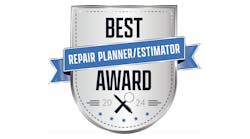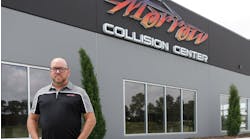Entering a discussion with an insurer might not be easy for either party. Aftermarket parts and repair operations required by a manufacturer might spark a “heated” discussion, says Jay Cassel.
Cassel, collision repair center manager for Bennett Collision Center at Bennett Toyota in Allentown, Pa., has been with Bennett Toyota for three years and, before that, he worked for independent shops and other dealerships in the past. In that time, he’s honed his negotiating skills, especially when it comes to insurers.
To Cassel, the relationship between a body shop and insurer is similar to the relationship the body shop has with the customer. As with any relationship, there are highs and lows. He cautions that a shop should look to get paid for every repair—but also to remember to treat insurers how you would want to be treated.
“Unfortunately, in this business, not enough shops are making sure they get paid for everything they do in the repair, “ Cassel says.
And, for a collision repair shop that is not a DRP, negotiating can be even more challenging, Cassel says. He shares three objections that a shop operator will often hear and ways to improve the relationship with insurers–making getting paid for work easier.
Objection No. 1: "There's no proof."
Cassel says one of the biggest things that any body shop can do when discussing repair bills with insurance agents is to document.
“Make sure you are getting paid for everything you do,” he says.
There should be proper photo documentation, including photos of the vehicles and paper documentation. Also, the technician needs to follow OEM repair procedures and mark that those were followed in the process. This shows the insurer that the shop followed repair processes according to the manufacturer’s requirements.
Cassel’s team documents the repair through a strict SOP file, he says.
“Fortunately, our car repairs are done on a very select few car manufacturers like Toyota, Infiniti, Jaguar, Land Rover and Maserati,” Cassel says. “About 95 percent of the work from my shop is from those vehicles.”
Cassel has each of his three estimators take time before the repair to look up the OEM procedures through Repair Methods, a program in the shop’s CCC ONE estimating software. Each specific line of cars also has its own program that staff can look up online. Toyota, for example, has a technical information section (TIS) and the technicians and estimators have a login for that platform.
Then, each estimator can work with any insurer who comes into the shop at any given time. They simply grab the car’s information packet, which outlines every aspect of the job and what each person in the shop did for that job.
Objection No. 2: "I don’t have time to see everything you want to show me."
“Like any other relationship you treat them like a human being, because they are,” Cassel says.
Sometimes, the same adjusters will come out to the shop, so he says this is an opportunity for the shop to build trust.
“Show that the work that you’re doing is actually the work that you’re doing,” he says.
Talk to the adjuster, he says, and explain why the repairs were chosen for that vehicle. There is no black and white book for repair times. For instance, repairing door dents can be based on opinion because one technician might take an hour to fix it, while another technician takes three hours, Cassel says. When discussing the repair times, for example, it is best to go over the duration of the repair based off the average time it takes a top technician to repair the vehicle.
To make the relationship easier on the insurer, Cassel and his team do not set appointments for insurers to come to the shop to look at a supplement. Instead, Cassel says the shop takes the insurer’s schedule into consideration.
“If they have, say, 15 body shops to visit, I’ll ask them to fit me in around that,” Cassel says.
Objection No. 3: "The repair shouldn't take so long."
Some common points of contention between a shop employee and an insurer are repair times, book times, whether an item needs to be taken off to do the repair process and incidentals like miscellaneous operations list (which includes items like plastic to cover vehicles during paint).
“These guys don’t work on cars most of the time, and some do come from a business background,” Cassel says. “But, it’s our job to educate the adjusters that come out and explain to them why we do these operations.”
Cassel says to think of teaching the repair to an insurer as if the shop employee is talking to a customer. Give them insight into why the car was at the repair shop for the specific length of time, what kind of work was done, and whether or not the vehicle performs the same, in terms of safety and performance, as before the accident.



